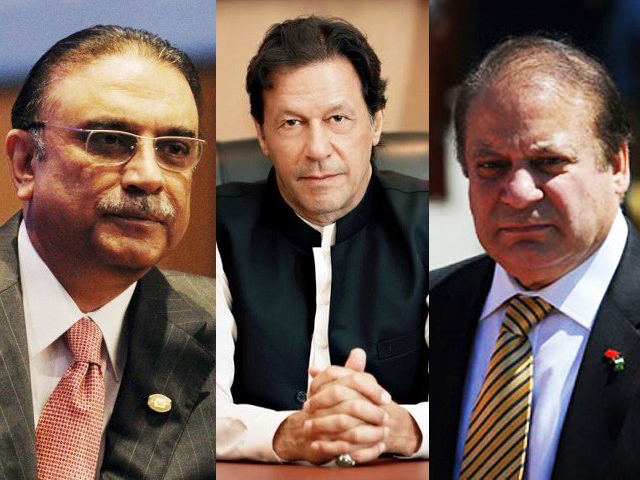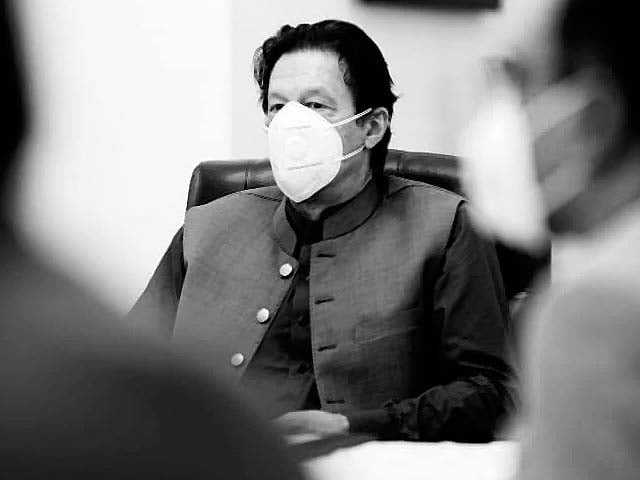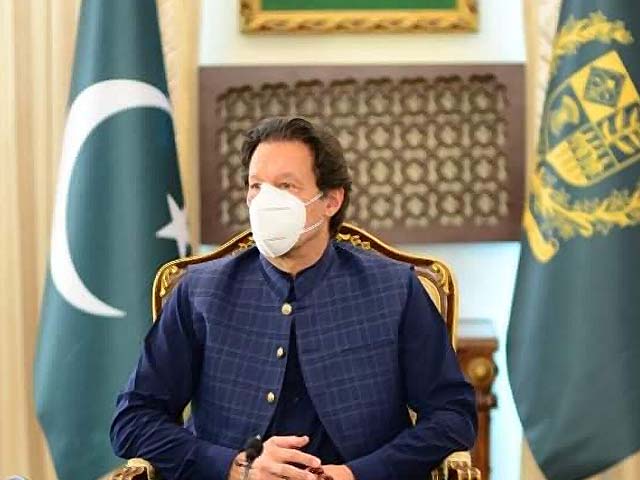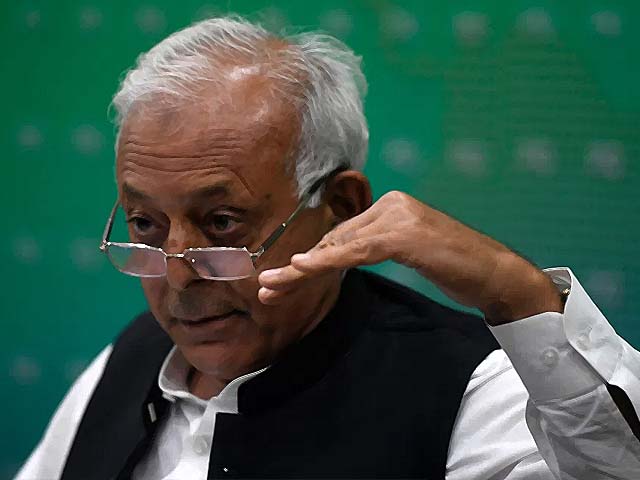
Two of the main political parties of the past are somehow striving to stay relevant in the rapidly changing political dynamics of the country.
While PML-N, PPP drown in accountability and PTI figure out how to run the country, TLP fills the vacuum
TLP is getting stronger by the hour and has united the Barelvi votes in Punjab, denting PML-N and PTI's vote bank.
Ever since his release from jail, Nawaz Sharif has been visibly absent from the political arena. He is seemingly cautious while talking to the media, his tone is softer, the victimisation narrative is no longer brought up, while he also does not delve into his plans for the future, or that of his party. A similar change can be witnessed in his daughter, Maryam Nawaz, who has practically disappeared from the limelight.
Meanwhile, Shehbaz Sharif is under the custody of the National Accountability Bureau (NAB), battling for political survival by defending himself on all the charges levelled against him by the anti-graft watchdog. Other Pakistan Muslim League-Nawaz (PML-N) stalwarts, such as Khawaja Saad Rafique, Khawaja Asif and Hanif Abbasi, are all facing inquiries related to corruption in infrastructure projects, misuse of power and making money by illegal means. It seems Hamza Shahbaz is the only one left to lead the PML-N for the near future, as he mends fences with the powers that be.
The accountability drive in Punjab has brought the entire PML-N under the focus of NAB, and has created a negative perception of the party among the urban middle-class voters in the province. One can argue that most of the charges levelled against the PML-N are to undermine its political grip in Punjab, but ultimately perception is what matters, and one way or another the perception is being built that the PML-N has been involved in corrupt practices throughout its previous tenure. The charges from all directions have left no room for Nawaz to be on the offensive, and the only option left is for the party to reshape its political narrative. No longer can Nawaz be seen criticising the judiciary the way he used to, for perhaps he has come to the conclusion that a soft stance is vital at the moment for the survival of his party and his family.
On the other hand, the Pakistan Peoples Party (PPP) is also facing a similar accountability drive in Sindh. Asif Ali Zardari, Faryal Talpur and their close aides are facing inquiries on the alleged money laundering of billions of dollars. It is becoming more and more impossible for Zardari to somehow get a National Reconciliation Ordinance (NRO) from the powerful quarters, as the cases against him are exposing huge corruption in almost all the projects undertaken during the last 10 years of PPP’s rule in Sindh. Perhaps Zardari did not read the situation well, for in a bid to benefit from the political demise of the Sharifs and the PML-N, he forgot the little factor that the change in the political structure will also require his elimination from politics.
In any case, two of the main political parties of the past are somehow striving to stay relevant in the rapidly changing political dynamics of the country. Prime Minister Imran Khan and his Pakistan Tehreek-e-Insaf (PTI) have succeeded in furthering the narrative against both parties amongst the masses, and while PML-N and PPP are busy dealing with the references and the judicial cases, the PTI government has become the first elected government in recent memory that is not facing much opposition inside and outside the parliament, while Imran has also made use of this opportunity by shifting his party’s narrative more towards the centre.
For instance, in his speech after the protests by the Tehreek-e-Labbaik Pakistan (TLP), the prime minister actually emphasised on the need to restore the writ of the state at any cost and acknowledged the importance of peace and stability. Though he was not able to execute what he declared during that speech, it can nonetheless be taken as a positive move towards building a progressive narrative as far as PTI’s politics is considered. Perhaps Imran has realised that the rise of TLP in Punjab has not only dented the PML-N’s vote bank as his party had hoped, but has also shrunk the space for the PTI to grab the far-right vote bank on the basis of a conservative political narrative.
However, the TLP is getting stronger by the hour and has mobilised and united the Barelvi votes in Punjab. This also means that the party has ended PML-N’s hegemony over Punjab’s electoral politics, so if Nawaz and the PML-N somehow survive the current wave of accountability, they will now have to develop a new strategy to win back the religious vote bank, particularly the Barelvis in Punjab. The PML-N may also have to spread out to other provinces, for the TLP does not seem to be slowing down in its growth. Whether or not they will be able to dislodge the TLP remains a question for the future.
On the contrary, Zardari can still take a breather, as there is still no political force in rural and semi-urban Sindh that can shrink the PPP’s vote bank. Their biggest challenge remains Karachi, where the PTI has capitalised on the PPP’s inefficiency and the unfortunate history of the Muttahida Qaumi Movement-Pakistan (MQM-P). If the case against Zardari does go through and he is sent behind bars, it would be interesting to witness how the electables from Sindh respond. Even if Zardari also survives the accountability onslaught, it is highly unlikely the PPP will gain significant grounds in Punjab and Khyber Pakhtunkhwa (K-P), and is likely to remain confined to Sindh.
So this leaves the political chess board with the two main opponents, PTI and PML-N, alongside the TLP emerging as a spoiler for them both. However, if Nawaz continues to surrender for the time being and once again aligns with the powers that be the way he had in the past, there is no doubt his party will rise again to challenge the PTI in the future. After all, it is not difficult to topple the Punjab government at any given day, as the majority enjoyed by the PTI in the Punjab Assembly is very narrow.
These accountability drives from NAB and the judiciary have completely changed our political landscape, as only the PPP and PML-N seem to be the focus of these inquiries. But judging by our history, one can predict these drives will not be able to disintegrate or eliminate these parties from the political horizon. After all, we saw how the PPP was victimised during the era of Ziaul Haq, and how the same happened to the PML-N under Pervez Musharraf. This time, these drives of accountability are only leading to a vacuum across the country.
At the same time, every passing day Imran’s lofty claims and promises are proving false and unrealistic, which is actually discrediting the PTI and its narrative of change. Their inability to run Punjab, the constant questioning over the role of Punjab Chief Minister Usman Buzdar and the dependence on the Chaudhry brothers in order to run the province is creating a rift within the PTI as well. This vacuum across Pakistan is now being filled by right-wing groups like the TLP.
In the meantime, while both parties stay busy saving themselves and struggle to survive, Imran will have five long years in office to prove his critics wrong and rise as the most powerful leader of recent times. One can only hope he makes good use of this time.




COMMENTS (3)
Comments are moderated and generally will be posted if they are on-topic and not abusive.
For more information, please see our Comments FAQ